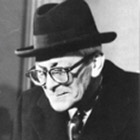| Recently
a number of former CIA officers received an invitation from
the Spy Museum in Washington to attend a luncheon for former
KGB Col. Victor Cherkashin. The event, as the invitation
said, would afford "a once-in-a-lifetime opportunity
to dine and dish with an extraordinary spymaster."
In the heyday of the Cold War, such an offer, delivered
with slightly more discretion, might have been the prelude
to a KGB recruitment operation. Now it's merely the notice
for a book party celebrating yet another memoir by a former
KGB officer recounting how the KGB duped the CIA.
In this case, there is a great deal to tell. Victor Cherkashin
served in the KGB from 1952, when Stalin was still in power,
until the Soviet Union disintegrated in 1991. During most
of that time his mission was to organize KGB operations
aimed at undermining the integrity, confidence and morale
of the CIA. He seems to have been good at his job. His big
opportunity came when he was the deputy KGB chief at the
Soviet Embassy in Washington between 1979 and 1985.
Those years were the height of a ferocious spy war within
the Cold War. In "Spy Handler" Mr. Cherkashin
describes in detail how he helped convert two American counterintelligence
officers -- one well-placed in the CIA's Soviet Russia Division,
the other in the FBI -- into moles. Their names are notorious
now, but over the course of a decade Aldrich Ames and Robert
Hanssen operated with anonymous stealth, compromising most
of the CIA's and FBI's espionage efforts in the Soviet Union.
But that wasn't the end of Mr. Cherkashin's glory. Returning
to Moscow, he helped run "dangle" operations in
which KGB-controlled diplomats feigned a willingness to
be recruited by their American counterparts, only to hand
over disinformation when they were finally "recruited."
Thus when the CIA came around to investigating why its agents
were being compromised in Russia, the KGB sent the CIA a
disinformation agent, for example, to paint false tracks
away from its moles. This agent -- "Mr. X" --
offered to betray the Soviet Union for $5,000. When the
CIA snapped up the bait, Mr. X pointed it to its own secret
communication center in Warrenton, Va., falsely claiming
that the KGB was electronically intercepting data from its
computers. The purpose, of course, was to divert the agency
away from the mole, who continued betraying CIA secrets
for eight more years.
Told from the KGB's vantage point, Mr. Cherkashin's story
provides a gripping account of its successes in the spy
war. He shows Mr. Hanssen to have been an easily managed
and highly productive "penetration" who operated
via the unusual tradecraft of dead drops, leaving material
at designated locations where it could be transferred without
spy and handler ever meeting. (Indeed, the KGB never knew
Mr. Hanssen's identity.) Mr. Ames, for his part, was a more
complex case, since he had come under suspicion and the
KGB had to concern itself with throwing the CIA off his
trail. That America's counterespionage apparatus allowed
both men to operate as long as they did is a testament to
its complacency as much as to the KGB's cleverness.
And indeed, Mr. Cherkashin skillfully torments his former
adversary, the CIA, by attributing a large part of the KGB's
success to the incompetence of the CIA leadership, or its
madness. He asserts, in particular, that the CIA had been
"all but paralyzed" by the "paranoia"
of James Jesus Angleton, the CIA's longtime counterintelligence
chief, who suspected that the KGB had planted a mole in
the CIA's Soviet Russia division.
Mr. Cherkashin is right that Mr. Angleton's concern retarded,
if not "paralyzed," CIA operations in Russia.
After all, if the CIA was indeed vulnerable to KGB penetration,
as Mr. Angleton believed, it had to assume that its agents
in Russia would be compromised and used for disinformation.
This suspicion would recommend a certain caution or tentativeness,
to say the least. Mr. Cherkashin's taunt about Mr. Angleton's
"paranoia" echoed what was said by Mr. Angleton's
critics in the CIA, who resented his influence, believing
that polygraph tests and other security measures immunized
the CIA against such long-term penetration.
But of course Mr. Angleton was right, too. On Feb. 21, 1994,
Mr. Ames, the CIA officer who had served in the Soviet Russia
division, was arrested by the FBI. He confessed that he
had been a KGB mole for almost a decade and had provided
the KGB with secrets that compromised more than 100 CIA
operations in Russia. Mr. Hanssen was caught seven years
later.
Since Mr. Cherkashin had managed the recruitment of Mr.
Ames and helped with that of Mr. Hanssen, his accusation
that Mr. Angleton was paranoid for suspecting the possibility
of a mole has the exquisite irony of a stalker following
his victim in order to tell him that he is not being followed.
Mr. Cherkashin adds a further twist by suggesting that Mr.
Angleton's "paranoia" made it easier for the KGB
to recruit demoralized CIA officers as moles. According
to this tortured logic, if the CIA -- and its counterintelligence
staff -- had acted more ostrich-like, by denying the existence
of moles in its ranks, the KGB would never have found Aldrich
Ames or penetrated the agency in other ways.
Mr.
Cherkashin, who received the Order of Lenin for his work
against the CIA, now runs a security company in Moscow.
Because his side lost the Cold War, he is free to travel
to Washington to toast his former adversaries (and present
them with autographed copies of "Spy Handler").
The unauthorized revealing of KGB secrets is against the
law in Vladimir Putin's Russia, and Mr. Cherkashin says
that he does not plan to bring out an edition there. But
why not? It's hard to imagine that the authorities would
find much to object to.
Mr. Epstein's "The Big Picture: The New Logic
of Money and Power in Hollywood" will be published
in February.
[back
to archive]
|



